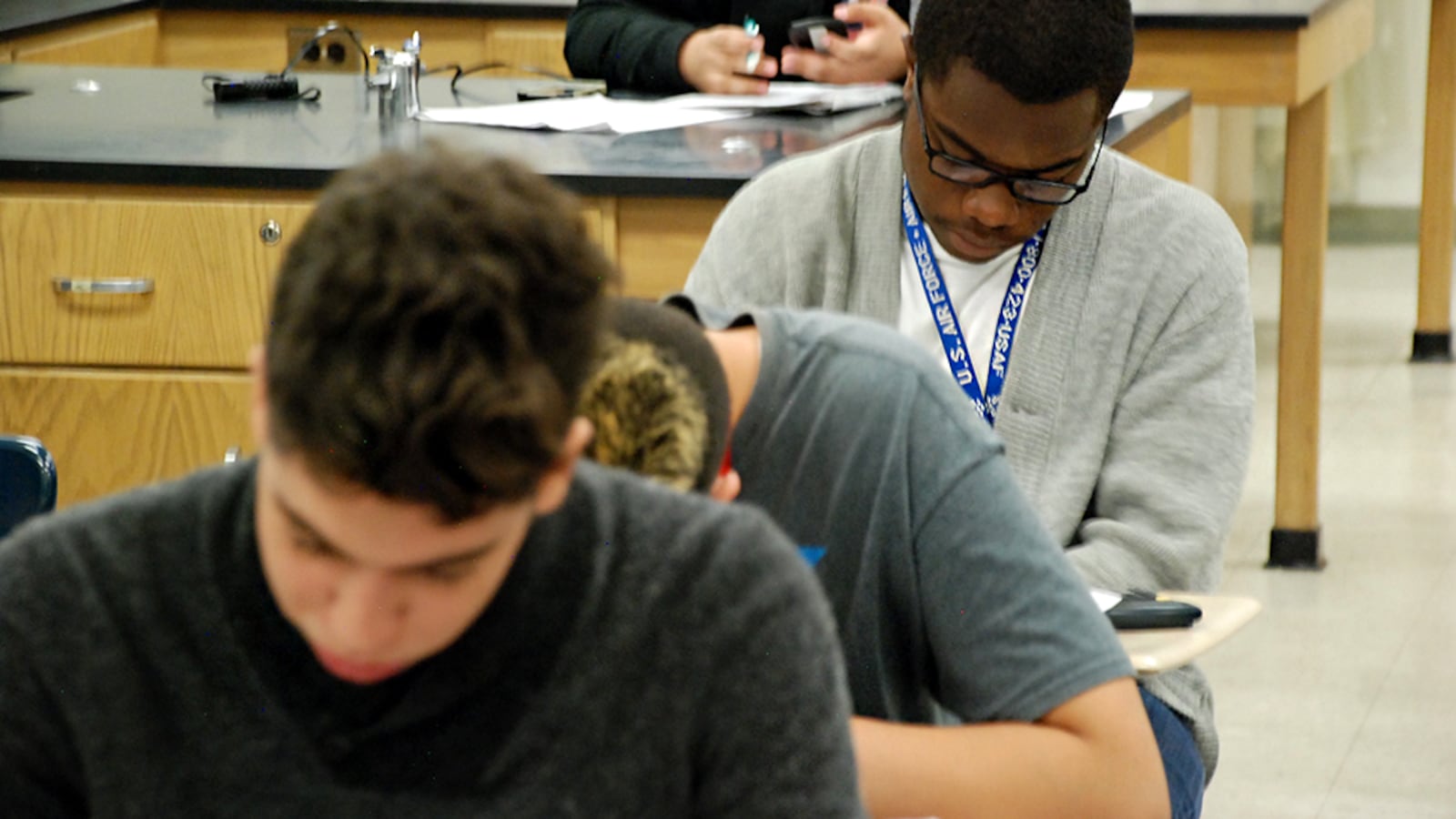The city’s four-year graduation rate hit 70 percent in 2015, a record high for New York City and a two-point increase from the previous year.
Graduation rates among black and Hispanic students still lag far behind white and Asian students, but all groups saw their numbers increase. The rate for students with disabilities and those still learning English also moved up but remain far below the city average.
The city’s August graduation-rate jump was accompanied by a rise in the statewide rate to 80.3 percent, and an all-time high national rate of 82 percent. The numbers represent a victory for Mayor Bill de Blasio, who can claim a steady increase in the graduation rate since he took office in 2014. Since 2005, the graduation rate has improved by 24 points.
“Today’s announcement of more students graduating than ever and fewer dropping out speaks to the critical importance of maintaining the momentum we are seeing in education here in New York City,” de Blasio said in a statement. Last year, he set a goal for the city to achieve an 80 percent graduation rate by 2026.
The city graduation rate’s continuing rise is sure to elicit questions about the meaning of those numbers, especially following a wave of media reports last year detailing incidents where schools changed students’ grades or awarded them unearned credits in order to help them graduate. Outside New York, steadily climbing graduation rates in districts across the country have stirred doubts about the value of a diploma.
Part of the skepticism stems from the disconnect between high school graduation and college-readiness rates. Just over 49 percent of the city’s high school graduates last year were prepared for college-level work, according to one measure based on students’ standardized test scores.
“I want the graduations to go up with substance, with backing, otherwise it’s a ruse,” Regent Kathleen Cashin said.
As usual, the graduation results differed sharply according to students’ race and whether they have special needs.
While 85 percent of Asian students and 82 percent of white students earned their diplomas by August, only 65.4 percent of black students and 64 percent of Hispanic students had hit that mark. Among those groups, Hispanic and Asian students made the biggest gains this year — increases of 2.5 and 2.4 percentage points, respectively — while black and white students made slighter progress.
Meanwhile, the citywide dropout rate fell less than one point, to 9 percent. The dropout rate for Hispanic students, 11.9 percent, is still more than twice the rate for white students.
Students with special needs made progress, but still trail far below their peers. Just over 41 percent of students with disabilities earned diplomas last year, as did 40.5 percent of students who are still learning English.
Based on the state’s June graduation rates, New York City’s graduation rate increased by three percentage points to 67.2 percent.
Graduation rates have continued to increase even though the state’s graduation requirements became more stringent. Starting in 2012, students had to pass five Regents exams with a score of 65 to earn a diploma, instead of the previously required 55.
The exams are expected to get harder as the state continues matching exams to the more difficult Common Core standards. In response, Regents spent Monday morning discussing a number of alternative graduation pathways, including an appeals process for students who score between a 60 and 64, project-based assessments for students who fail Regents tests, and substituting a skills-based certificate for the fifth required Regents exam.
For now, the share of New York’s students earning diplomas is higher than ever.
State Education Commissioner MaryEllen Elia said that since the state has nearly reached its 80 percent graduation rate goal, it’s time to set a new statewide benchmark.
“We’ve got to, as a Board, identify what is that next level,” she said.

